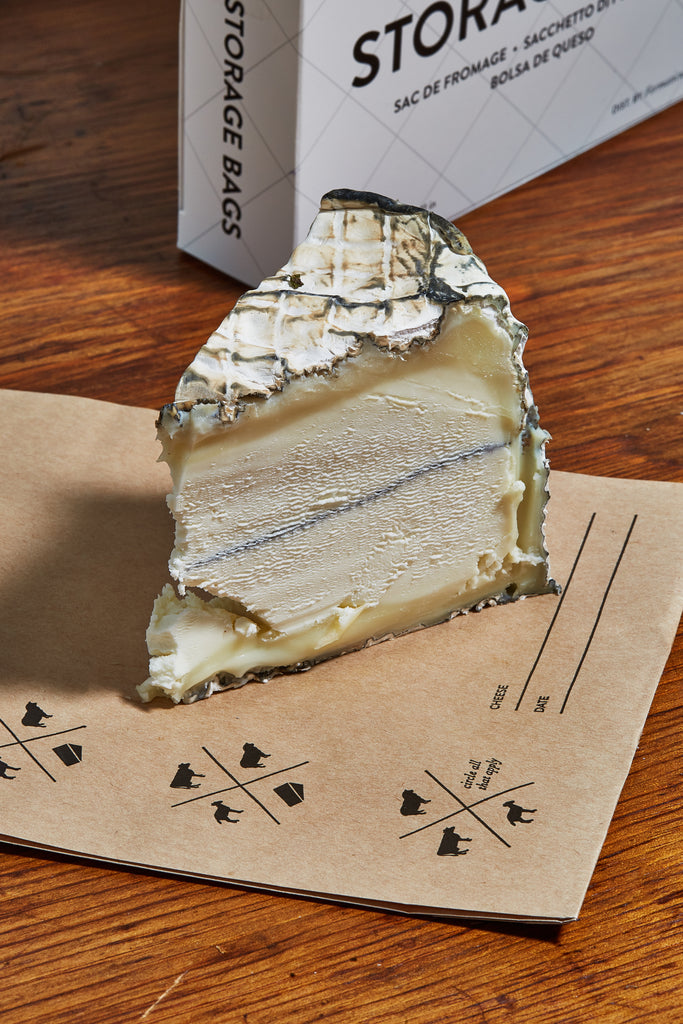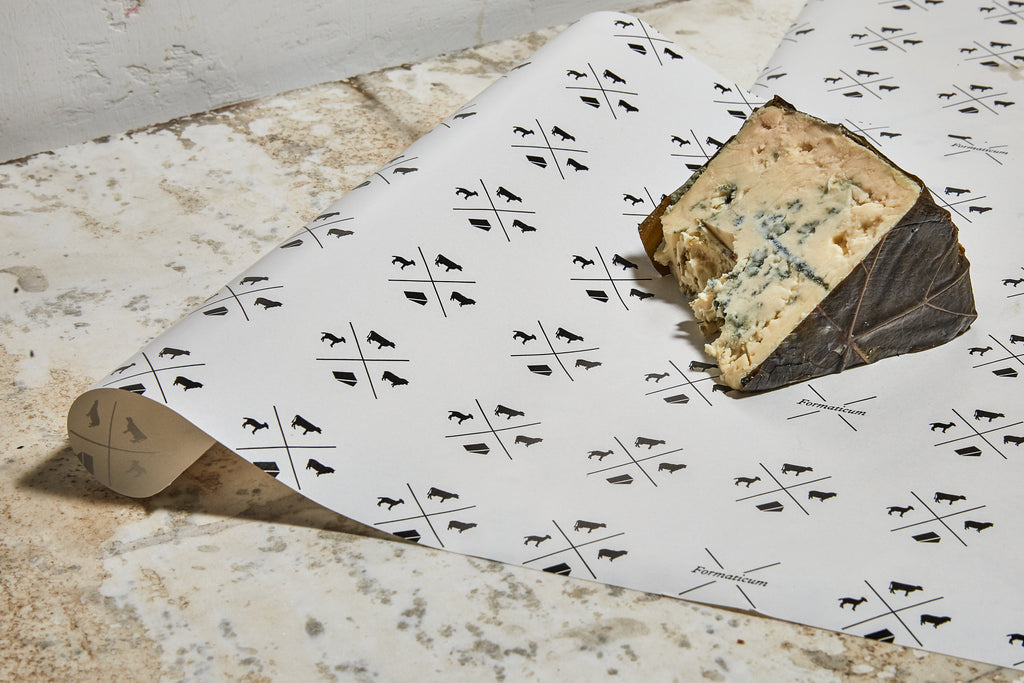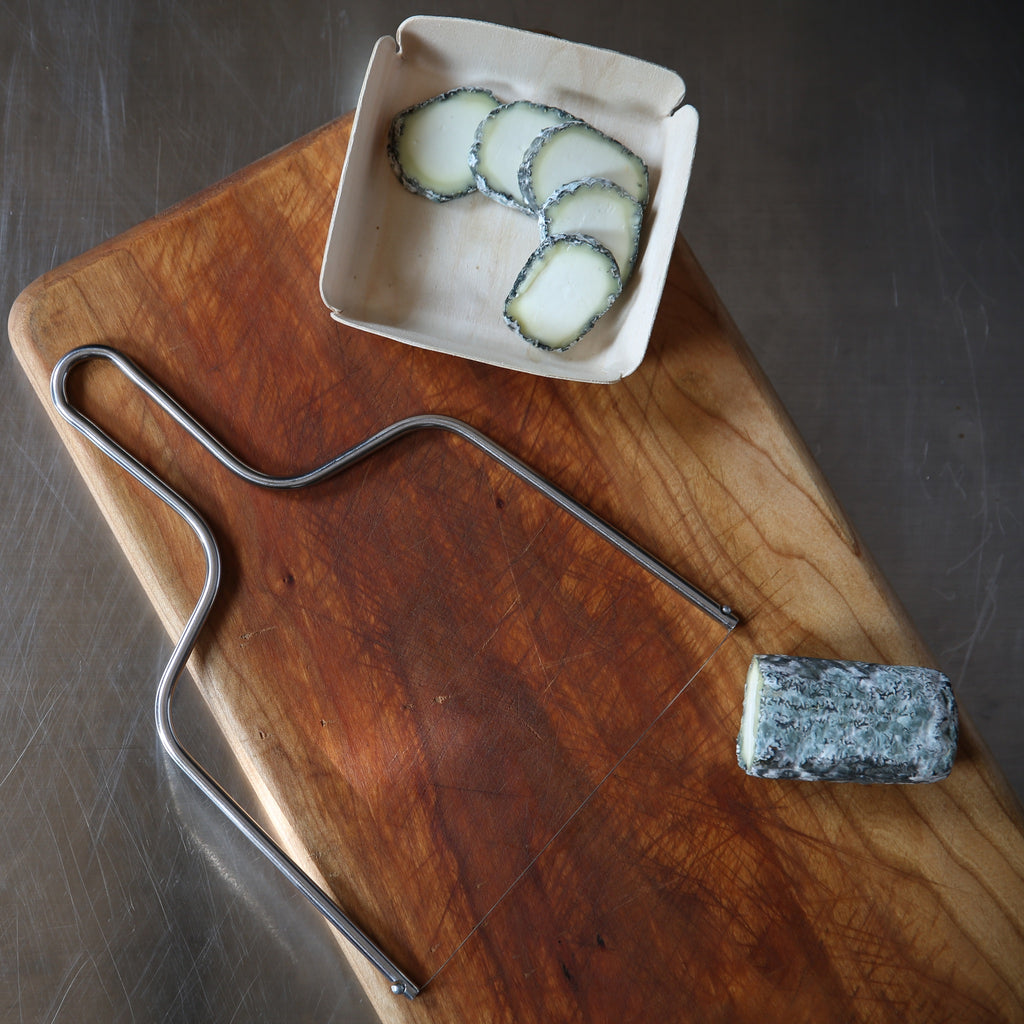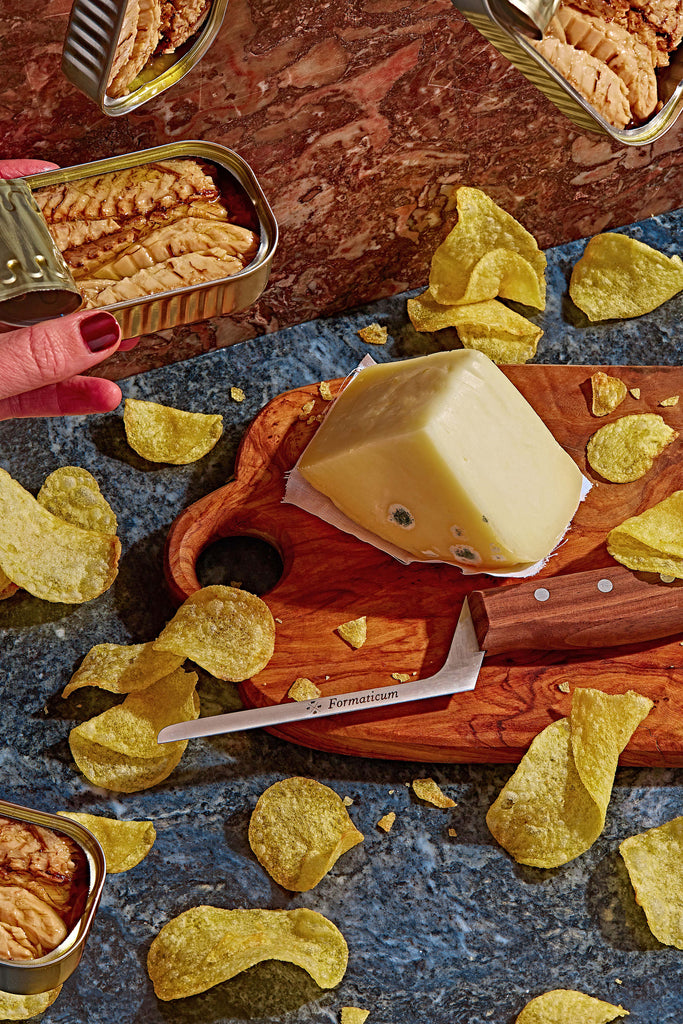American Cheeses Behind the Counter: A Comprehensive Guide

When your customers hear the words "American cheese," the first thing that likely comes to mind is a bright orange plastic-wrapped square. And while they might be the most well-known iteration, cheesemongers know that they're only a small slice (pun intended) of American cheese history. The United States is a melting pot (perhaps even a fondue) of different cultures (another pun, also intended) and each group of immigrants that arrived brought with them their own cheesemaking knowledge and traditions. And although these recipes have European origins, generations of American cheesemakers have adjusted and tweaked them to be their own. Many of your customers may not know that these cheeses even exist, let alone have tried them - and if they're European or interested in specialty food, they may have been led to believe that American cheeses are somehow inferior in quality, which is simply not true. But before we can tackle the challenge of changing a customer's mind about a specific cheese, it's important to understand the history behind American artisan cheese and how it came to be what it is today.
Perhaps the most established example is Cheddar, the recipe for which was brought by British immigrants in the 1700s and continued to develop its American identity until it became the first cheese produced in an industrial cheese factory and put all but a few artisan cheddar producers out of business. Small farmstead producers could not match the scale and price at which cheese could be made in large factories, and many operations could no longer sustain themselves. By the 1980s, a group of goat farmers affectionately known as the "Goat Ladies of the 80s" had decided it was time to revive the American cheese movement, and began to fight for artisan cheese's place at (or in this case, on) the table.
As a result of their efforts and the continued dedication of many dairy farmers and cheesemakers, American cheese is now thriving - makers all over the United States are producing world-class award-winning cheese, both influenced by European classics and from their own completely original recipes. This reinterpretation of established recipes with a fresh terroir has helped create some new icons, destined to become household names if they aren't already. Additionally, consumers' desire for more food transparency and sustainability has reinvigorated many smaller cheesemaking operations - in today's economic conditions, a high quality product usually comes with a higher price tag, and eco-conscious cheese lovers understand the importance and value of informed and responsible consumerism. And while pasteurized process cheese food (aka the aforementioned slices) certainly has a place in that story, there are so many more pages to be written - and metaphorically read aloud by us, the stewards of these makers' stories.
Many customers have a mental list of common cheeses that they've learned they enjoy - the Gouda, the Comté, the Brie that we're so often asked for. In response, we've put together a list of some iconic American cheeses and their European counterparts that provided the inspiration, as well as a list of some true American originals. We hope that encouraging your customers to try something new will help them branch out and foster a deep appreciation for the work that American dairy farmers, cheesemakers, and affineurs have dedicated their lives - especially in a country where cheese-based careers are not viewed and appreciated the way they are overseas.
And just as domestic cheesemakers have spent years nurturing, preserving, and reimagining historic cheese recipes in the face of industrialization, we encourage you to help your customers preserve their new discoveries and taste the flavor as the cheesemakers intended - wrapping cut to order cheese in Formaticum One-Ply Sheets and offering your customers Formaticum Cheese Storage Bags & Sheets is a great way to provide them with professional-quality cheese storage in their own homes.
Beaufort - Pleasant Ridge Reserve from Uplands Cheese (WI)
Goat Crottin - Bijou from Vermont Creamery (VT)
Chabichou - Shabby Shoe from Blakesville Creamery (WI)
Valençay - Bonaparte from Lazy Lady Farm (VT), Sofia from Capriole Farm (IN)
Abondance - Tarentaise from Spring Brook Farm (VT)
Vacherin Mont d'Or - Rush Creek Reserve from Uplands Cheese (WI), Winnimere from Jasper Hill Farm (VT)
Aged Gouda - St. Malachi from The Farm at Doe Run (PA), Sneek Gouda from Frisian Farms (IA), Marieke Gouda Reserve from Penterman Farm (WI), Aged Gouda from Jake's Gouda (NY)
Taleggio - Crema Alpina from High Lawn Farm, Grayson from Meadow Creek Dairy (VA), Hooligan from Cato Corner Farm (CT)
Camembert - Camembrie from Blue Ledge Farm (VT), Nancy's Camembert from Old Chatham Creamery (NY)
Ossau Iraty - Anabasque from Landmark Creamery (WI), Verano from Vermont Shepherd (VT)
Robiola - Melinda Mae from Mystic Cheese (CT)
Caerphilly - Carefully from Parish Hill Creamery (VT)
Gruyère - Alpha Tolman from Jasper Hill Farm (VT)
Emmentaler - Holey Cow from Central Coast Creamery (CA), Crybaby from Arethusa Farm (CT)
Stilton - Bayley Hazen Blue from Jasper Hill Farm (VT), Mad River Blue from Von Trapp Farmstead
Caciocavallo - Suffolk Punch from Parish Hill Creamery (VT)
Morbier - Ashbrook from Spring Brook Farm (VT), Coppinger from Sequatchie Cove Creamery (TN), Smorbier from High Lawn Farm
Queso Oaxaca - Queso Oaxaca from Don Froylan Creamery
Gorgonzola - West West Blue from Parish Hill Creamery
English Clothbound Cheddar - Bleu Mont Cheddar from Bleu Mont Dairy (WI), Shelburne Clothbound from Shelburne Farms (VT), Grafton Clothbound Cheddar from Grafton Village Cheese (VT), Cabot Clothbound Cheddar from Jasper Hill Farm (VT)
Raclette - Reading Raclette from Springbrook Farm (VT), Mount Raclette from Alpinage Cheese (WI)
Selles-sur-Chere - Bonne Bouche from Vermont Creamery (VT), Linedeline from Blakesville Creamery (WI)
Brie - Moses Sleeper from Jasper Hill Farm (VT), Mt. Alice from Von Trapp Farmstead (VT), Raw Milk Brie from Brush Creek Creamery (ID), Noble Road from Calkins Creamery (VT)
Brillat-Savarin - St. Stephen from Four Fat Fowl (NY), Kunik from Nettle Meadow Farm (NY), Mt. Tam from Cowgirl Creamery (CA)
Tomme de Savoie - Swallowtail Tomme from Stony Pond Farm (VT)
Parmigiano Reggiano - Big Sky Grana from Bleu Mont Dairy (WI)
Banon - O'Banon from Capriole Farm (IN), Holiday Cheer from Blakesville Creamery (WI), Pecuri in I Vigne from Blakesville Creamery (WI)
Jibneh - Jibneh from Kasbo's Market (NJ) is a unique cheese inspired by cheesemaker Benita's childhood love of Syrian cheese. "Jibneh" means cheese in Arabic and this cheese is described as a cross between mozzarella, feta, and halloumi, but it is flavored with mahleb (a Middle Eastern Spice made from ground cherry stones) and has a wonderful personality all its own.
And if your customer is feeling particularly adventurous, you can suggest the following American originals, made with unique recipes created entirely by American cheesemakers.
Cornerstone - perhaps the truest example of an American original, the Cornerstone Project seeks to highlight the nature of raw milk and its expression of terroir. Made by 3 separate cheesemakers, Cornerstone uses grass-fed raw milk, autochthonous cultures, local salt, and a natural aging process to showcase the unique flavors of the micro-environment from which it was born. Each cheesemaker uses their own versions of the aforementioned ingredients and resources, following the same recipe, and the results are vastly different - a true expression of the cheese's terroir.
Dunbarton Blue and Red Rock from Roelli Cheese Haus (WI) - unique blue cheeses with milder, more isolated blue mold due to pressing, a process not usually done to blue cheese - because p. roqueforti is activated by oxygen, blue cheeses are not usually pressed, in order to allow the mold to grow in the nooks and crannies between the curds, creating the signature blue veining.
Colby - a cousin of classic Wisconsin Cheddar made by stirring and washing the curds instead of stacking them, which creates a milder flavor.
Monterey Jack - while there are now several version of jack cheese on the market with different origin stories, this version was invented in the 1700s by Spanish Franciscan missionaries in CA, and later stolen and popularized by shrewd businessman David Jack when he purchased the land the mission was founded on.
Brick Cheese from Widmer's Cheese (WI) - invented by a Swiss-born cheesemaker in the late 1800s, this is a washed-rind cheese inspired by Limburger that gets its name from the signature shape, but also from the process of using bricks to press the cheese during aging.
Do you have a favorite American cheese that isn't mentioned here? Email us at wholesale@formaticum.com to let us know!
Monthly Recap: February 2024

February may be the shortest month of the year, but this month certainly wasn't short on cheese information and education! We covered a variety of cheesy topics and even launched some new products. Here's a quick recap of everything we discussed this month:
Blue cheese might be the most polarizing cheese in your case, but we think it's just misunderstood and under-appreciated. Use this list of tips to properly care for, display, and cut your blue cheeses to keep them looking and tasting as appetizing as possible for your mold-loving customers and blue cheese skeptics alike.
It's true - good cheese isn't cheap. But do you know why, and more importantly, can you effectively convey that information to your customers? Read our blog post that breaks down a cheese's journey from farm to cave to boat to cheese shop, and helps foster a better understanding of and appreciation for cheese that is absolutely worth the price tag.
New Product Alert! If the cheese signs in your case are a major source of stress for you, let us help. We're now offering custom cheese case signs that are sleek, sturdy, and most importantly, don't require you to spend hours cutting and laminating them. Plus - new sign holders that won't rust or poke into your cheese! Learn more by reading this post and email wholesale@formaticum.com with any questions or inquiries.
What is rennet, and what does it have to do with nursery rhymes? Check out this blog post that explains why rennet is so important to the cheesemaking process, and how to discuss rennet with your customers to correct any misinformation they may have learned on the internet.
And finally, it's a Leap Year, so it's time to help your customers Leap into something new the next time they visit your counter. This blog post outlines some of the most popular cheeses that customers ask for, and what you could suggest if they want to try something new. And remember to suggest Formaticum Cheese Storage Bags & Sheets so their new favorite cheese stays fresh and healthy in their fridge!
Thanks for joining us this month! Check back in March for more service tips, cheese facts & history, wrapping tutorials, and so much more. And don't forget to follow us on Facebook, Instagram, TikTok, and Youtube. If you have any questions or want to suggest a topic for us to cover in the future, please email emilia@formaticum.com.
Help Your Customers Leap Into Something New This Year!

This year is a Leap Year, meaning there is one extra day in February to sell cheese! If your customers are stuck in the same routine, week after week, buying the same quarter pound of the same cheese, it's time to help them Leap into something new for 2024.
Cheesemongers are the customers' tour guide through the cheese case! We've put together a list of some popular cheeses that could potentially be a gateway for your customer to try something similar that can help expand their palate and horizons.
If they like Humboldt Fog, offer them a taste of ash-ripened chèvre like Valençay, Selles-sur-Cher, or Blakesville Creamery Linedeline.
If they like Midnight Moon, have them taste Brabander or OG Ghoast.
If they like Manchego, suggest Ossau Iraty, Pecorino Sardo, Zamorano, or a raw milk farmhouse Manchego.
If they like Delice de Bourgogne, recommend Brillat-Savarin, St. Stephen, or Nettle Meadow Kunik.
If they like fresh chèvre, try offering an aged goat cheese like Bucheron, Leonora, or Blakesville Creamery Lake Effect.
If they like block cheddar, suggest a raw milk block cheddar like Shelburne Farms Cheddar, or even a clothbound cheddar like Montgomery's Cheddar or Cabot Clothbound.
If they like Gruyère, suggest Pleasant Ridge Reserve, Comté, or Beaufort.
If they like Jarlsberg, have them taste the original Swiss cheese - authentic Emmentaler AOP.
If they like Beemster, offer a sample of L'Amuse Gouda, Jake's Aged Gouda, or OG Kristal.
If they like Stilton, offer Stichelton, Shropshire Blue, or Bayley Hazen Blue.
If they like Roquefort, try Fourme d'Ambert or Valdeon.
If they like Piave, suggest Sbrinz, KM 39, or Montasio.
Once you've successfully led your customer to their new favorite cheese, don't forget that you are still their cheese educator! Teach them how to properly care for their cheese that they spent so much time and effort selecting. Formaticum One-Ply paper is perfect for most styles of cheese and will keep it healthy in your customer's fridge so that the flavor stays as fresh as the day they tasted it in the shop. You can also recommend that they purchase a package of Formaticum Reusable Cheese Bags so that they always have professional cheese storage at their fingertips in the future.
The Rennet Question

With the internet's recent discovery that real Parmigiano Reggiano is made with rennet and is therefore not suitable for vegetarians, cheesemongers everywhere are now fielding questions from customers in search of vegetarian-friendly cheese. Aside from reminding them of the classic nursery rhyme about Little Miss Muffett eating her curds and whey, here are some ways to streamline your rennet-based sales interactions.
First, it's helpful to dispel any internet-derived rumors about rennet by explaining the basics to your customer. For anyone who needs a refresher: coagulation is the first step of cheesemaking, separating the solids (curds) from the liquid (whey) so that the solids can be manipulated in different ways, eventually resulting in cheese. Some cheeses are lactic- or acid-coagulated, meaning that the action is caused by lactic acid bacteria present in the milk. But many cheeses, including most hard or aged cheeses, are made with rennet. Rennet-coagulated cheeses use animal (or "traditional"), microbial, or vegetable-based rennet.
Traditional rennet is derived from the 4th stomach, or abomasum, of a young ruminant animal. Vegetable-based rennet can be derived from plant-based sources like thistle, and microbial rennet is grown in a lab using live organisms like mold, yeast, or fungi.
Each version has benefits - while traditional rennet is better for longer-aged cheeses, microbial rennet is suitable for vegetarians, and is also cheaper to produce, which decreases the cost of cheesemaking. Thistle rennet is more common in torta-style cheeses from Spain and Portugal, and lends an herbaceous flavor to the cheese. Some cheesemakers use combinations of different types of rennet to achieve their desired texture and flavor.
It's also helpful to have a list on hand that contains all the vegetarian-friendly cheeses available in your case. It's easy to reference a list when a customer inquires, instead of frantically Googling different cheeses or having to check every sign in the case. You can add to the list as time goes on for a more comprehensive reference for the mongers working the counter.
You can also add this bit of information to your case signs along with the standard information about producer, milk type, and heat treatment. For more information about custom cheese case signs, email wholesale@formaticum.com.
Of course, there is no sales technique more effective than sampling. The USA produces the highest number of vegetarian rennet cheeses in the world, second only to Portugal, so these cheeses are usually a safe bet. You might even introduce your customer to their new favorite cheese!
Once you've cut your customer's cheese, be sure to wrap it in Formaticum professional cheese paper to preserve the flavor and keep it healthy in the fridge.

Formaticum News
Our home to share our cheese chronicles and more.
Categories
Recent Posts
Formaticum Retail Product Disposal Guide
Meet Your Monger: Carol Johnson of Monger's Palate
Meet Your Monger: Kai Norton of Bedford Cheese Shop
Upcoming Events
Connect with Us
Join the Newsletter
Sign up to receive special offers, new product releases, updates from the cheese shop, and more.
